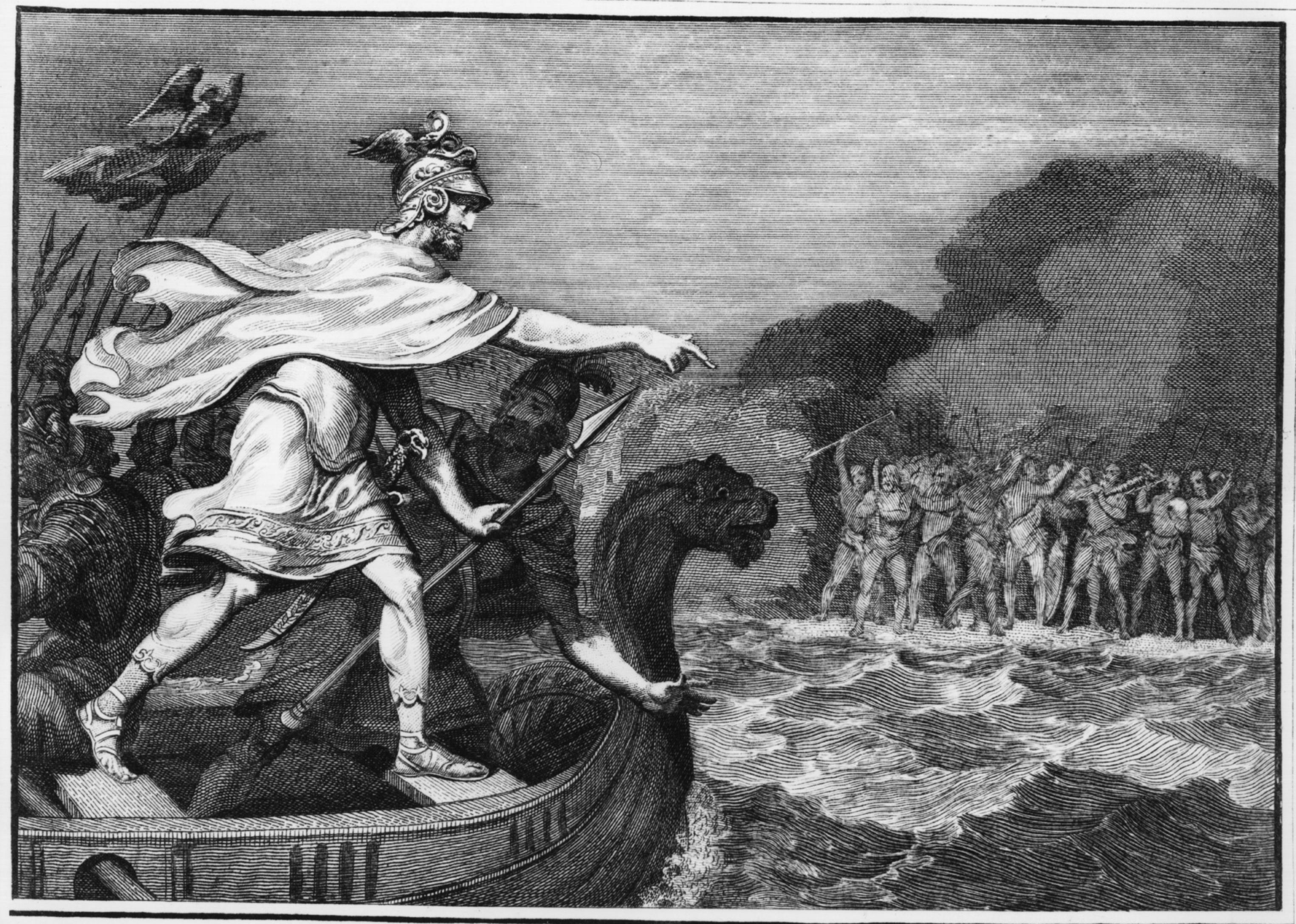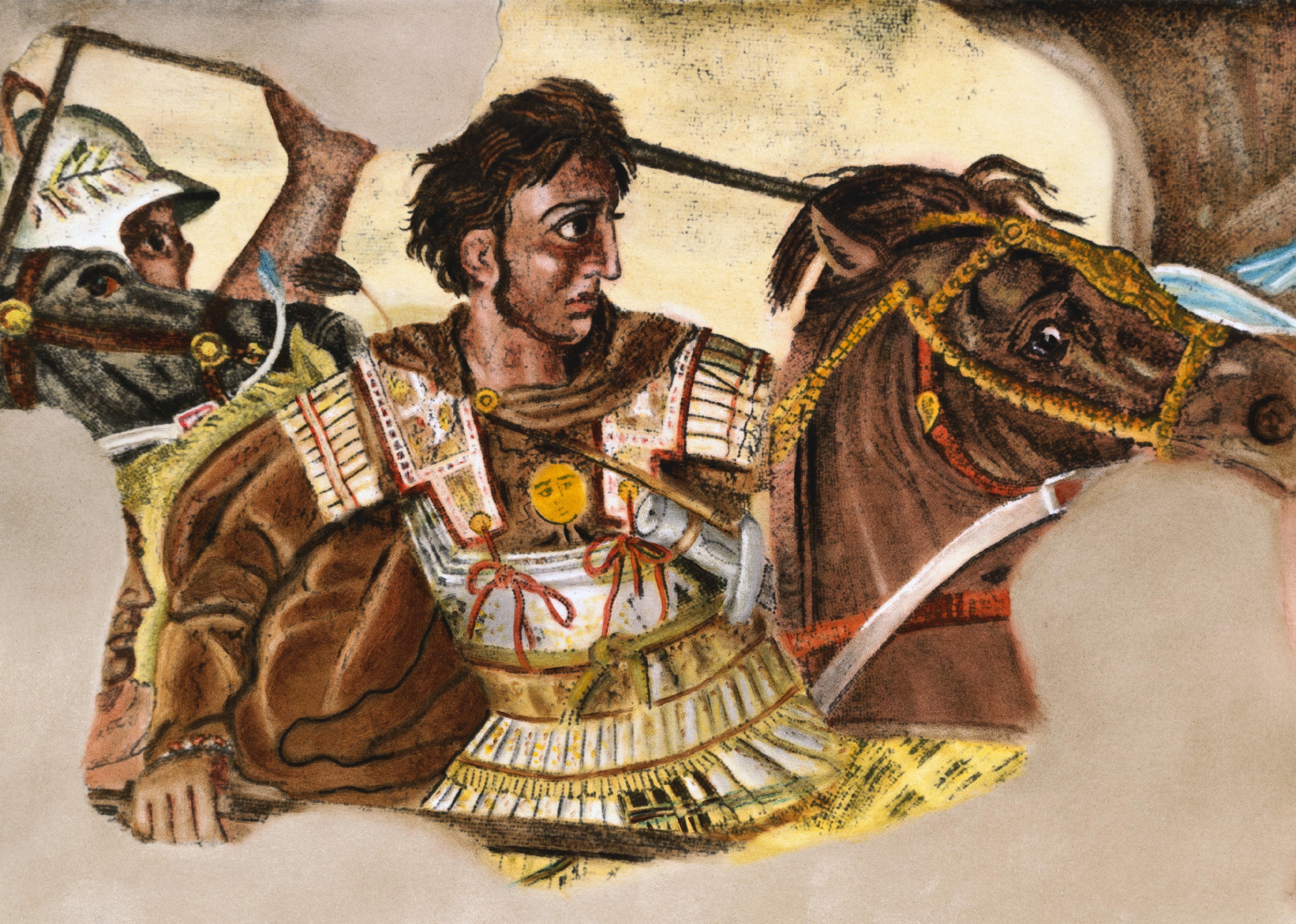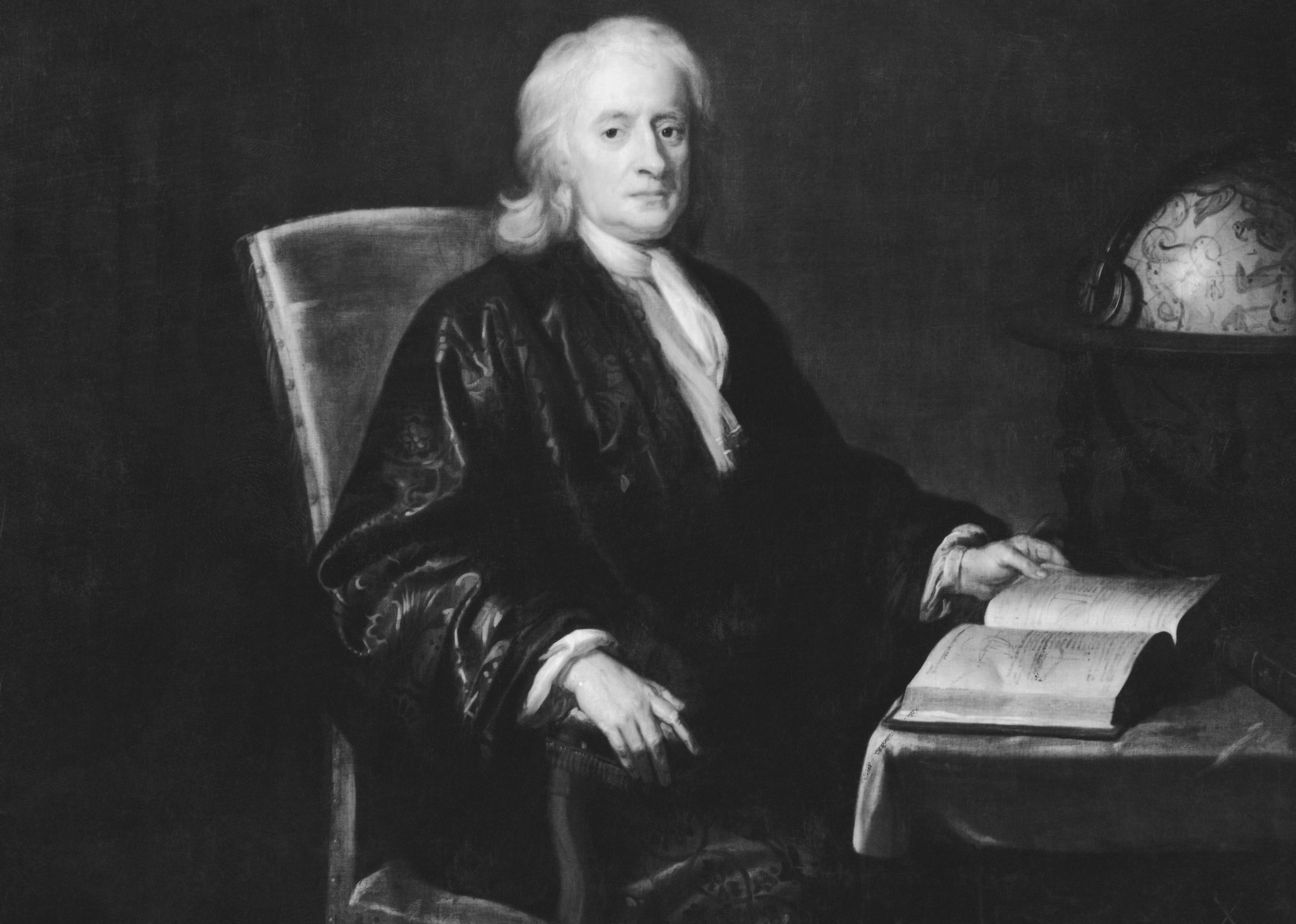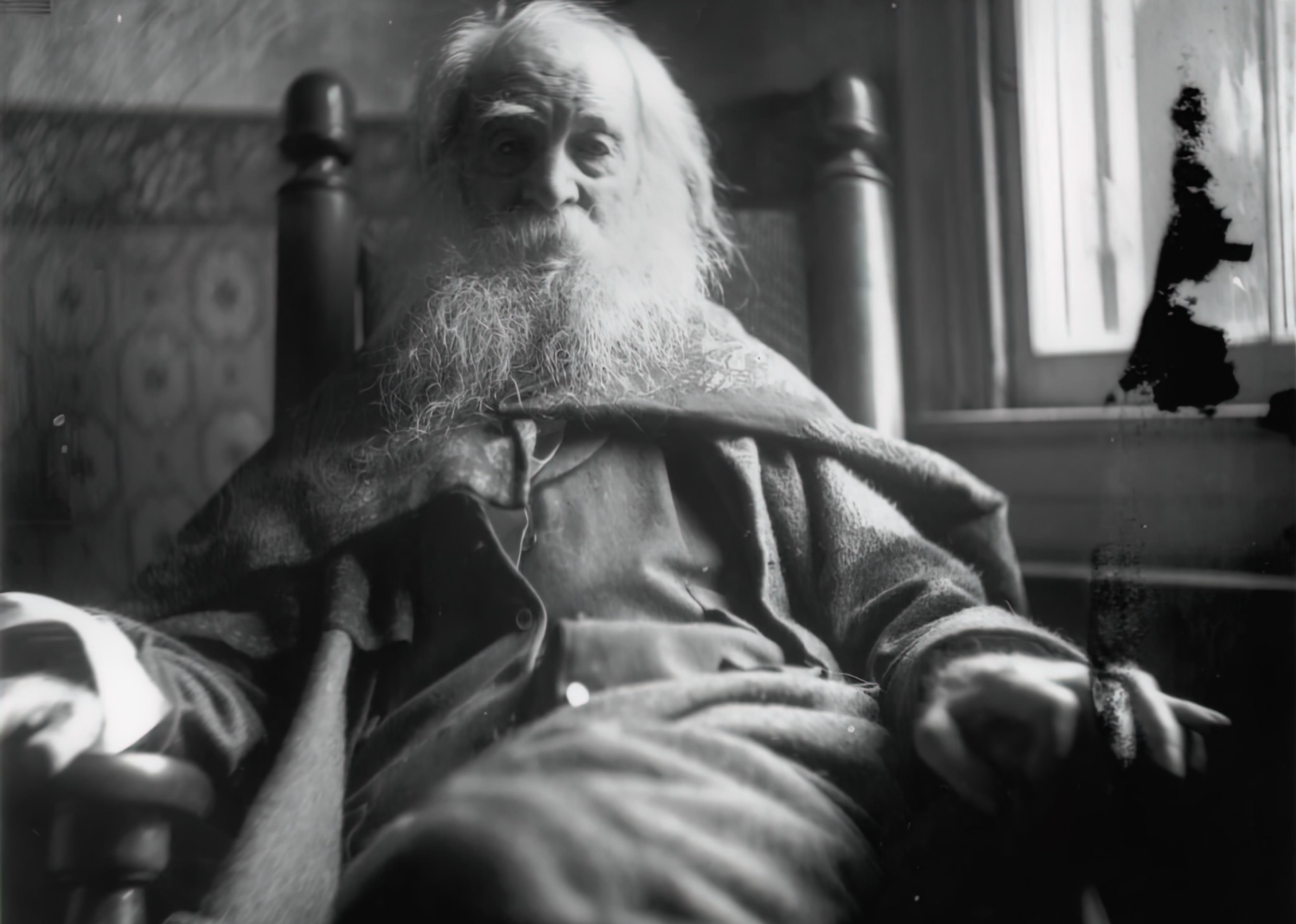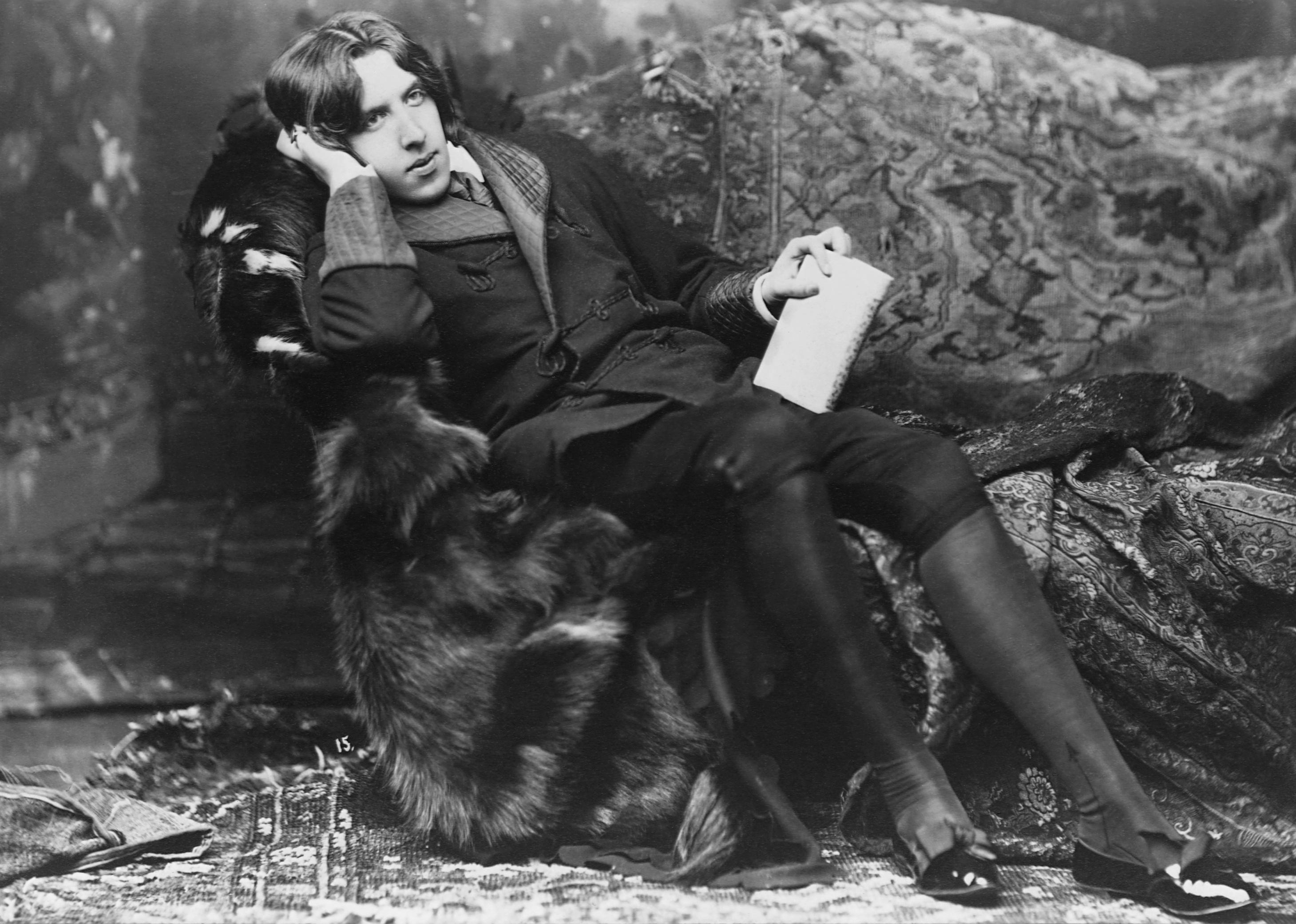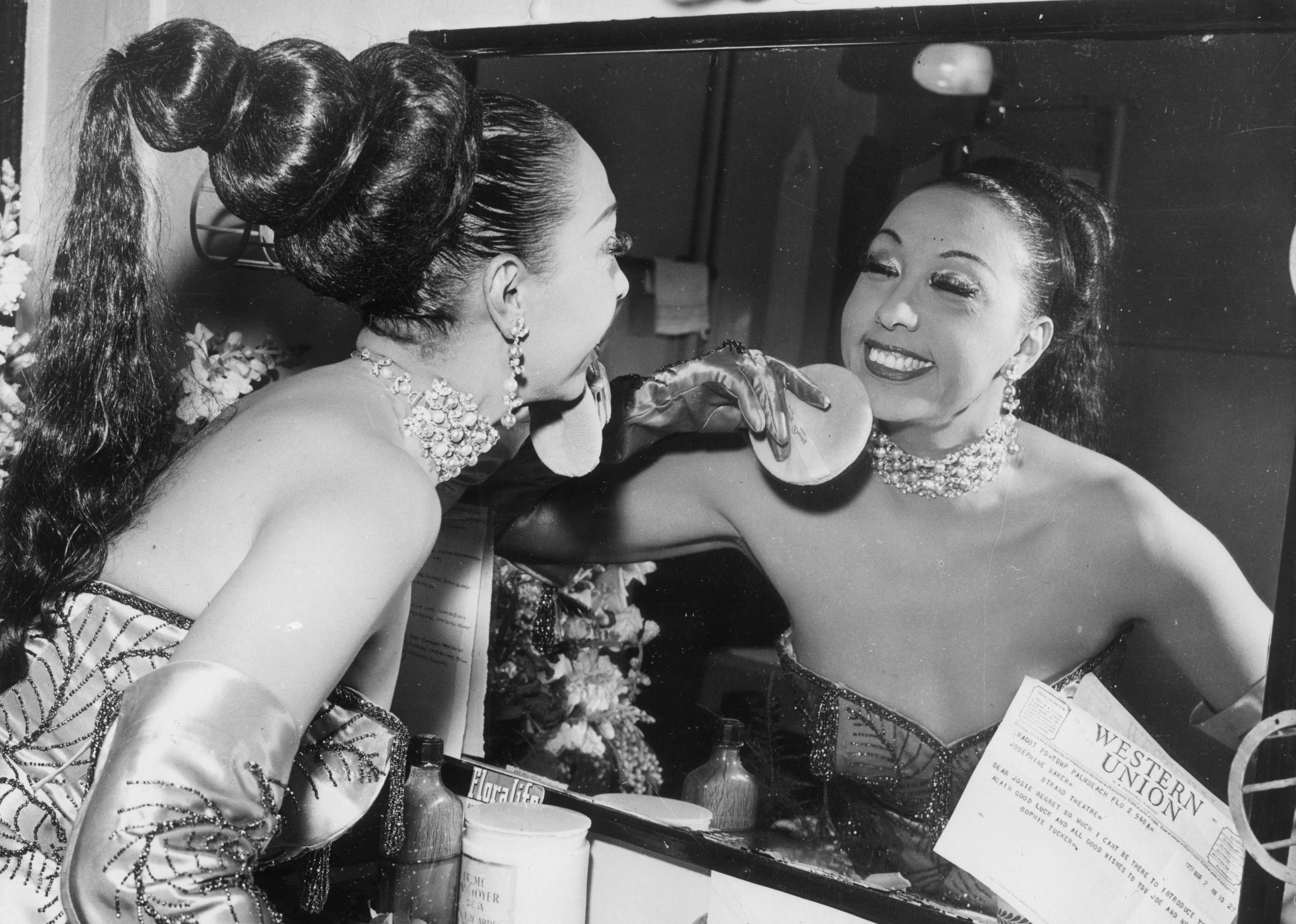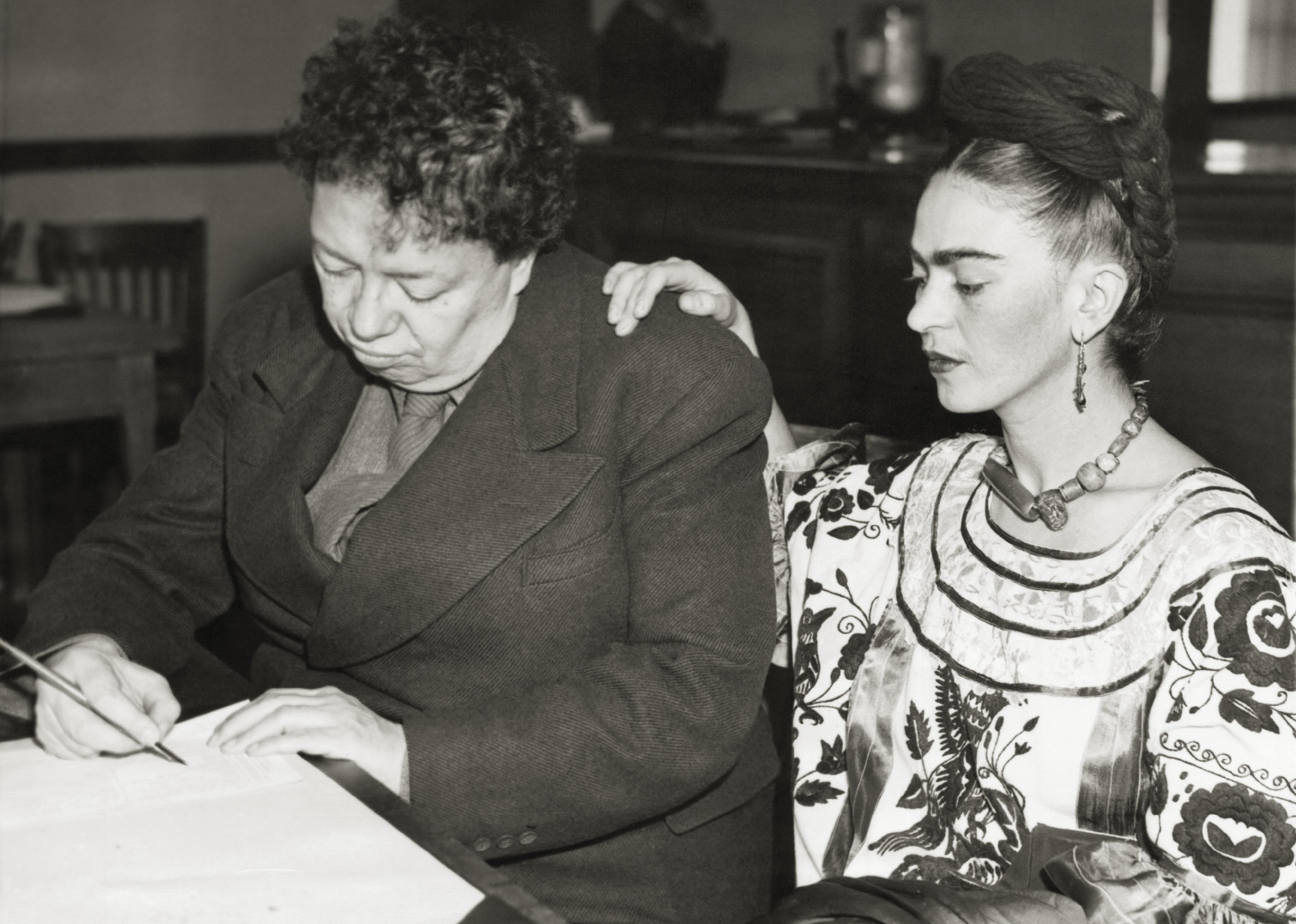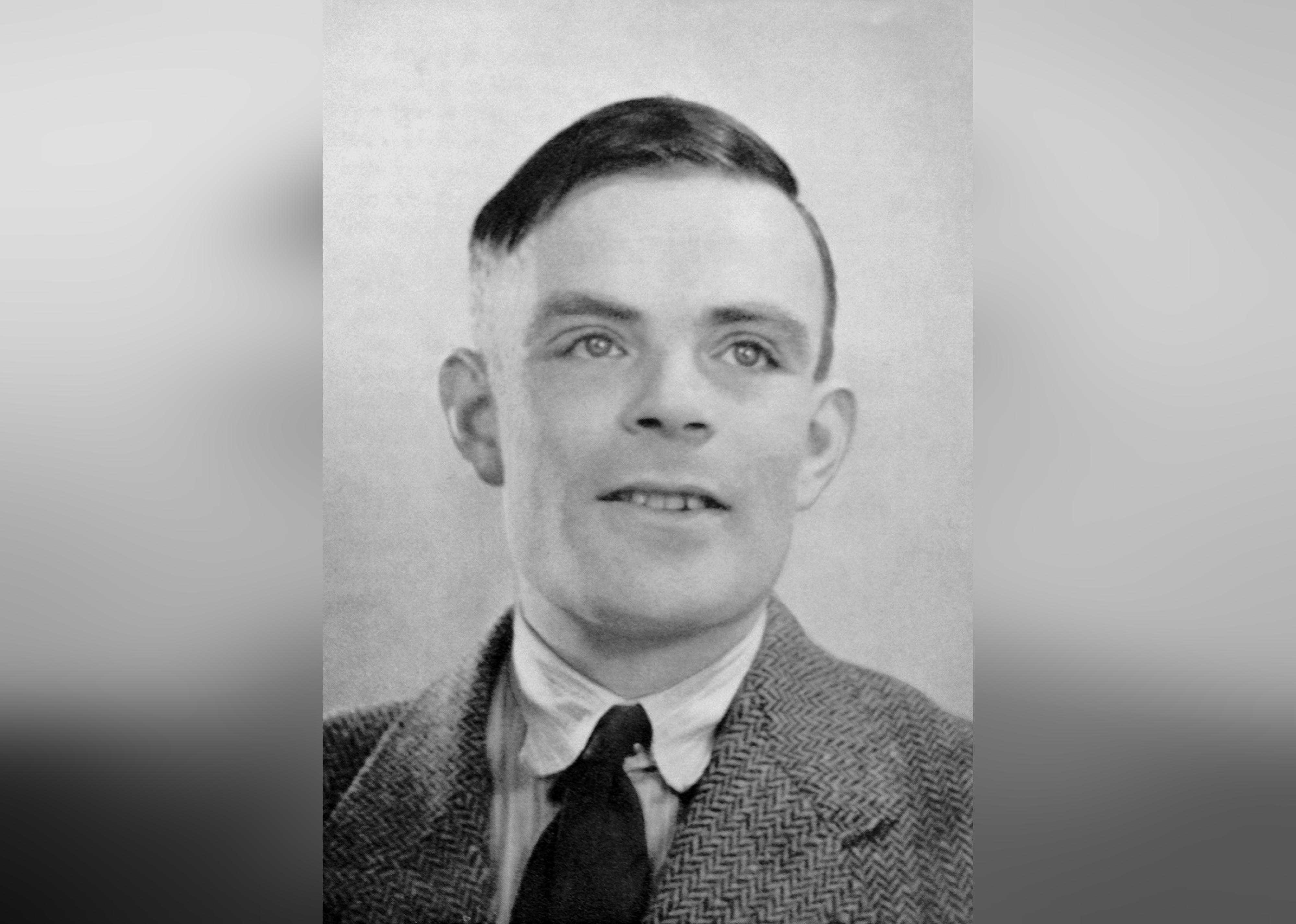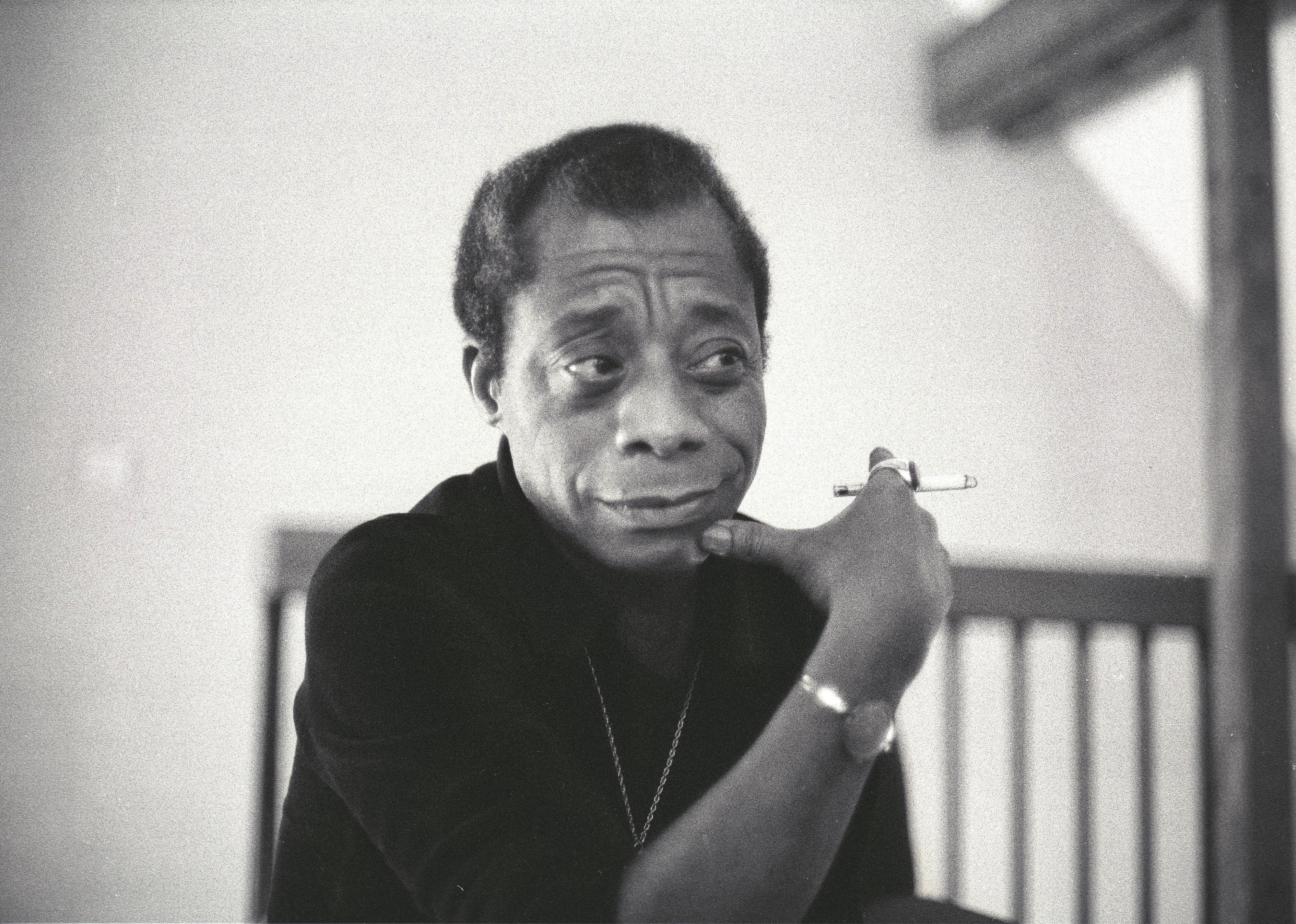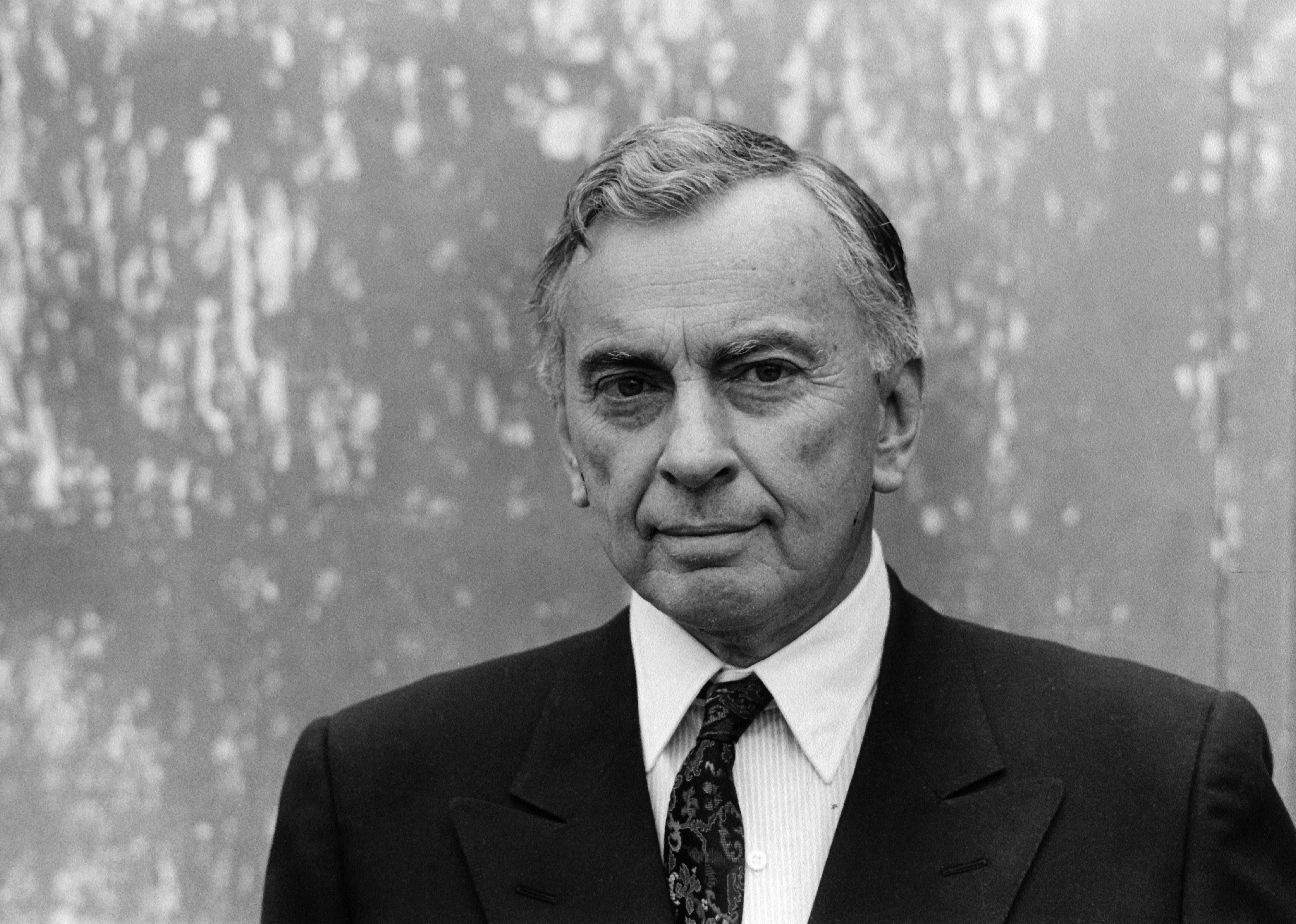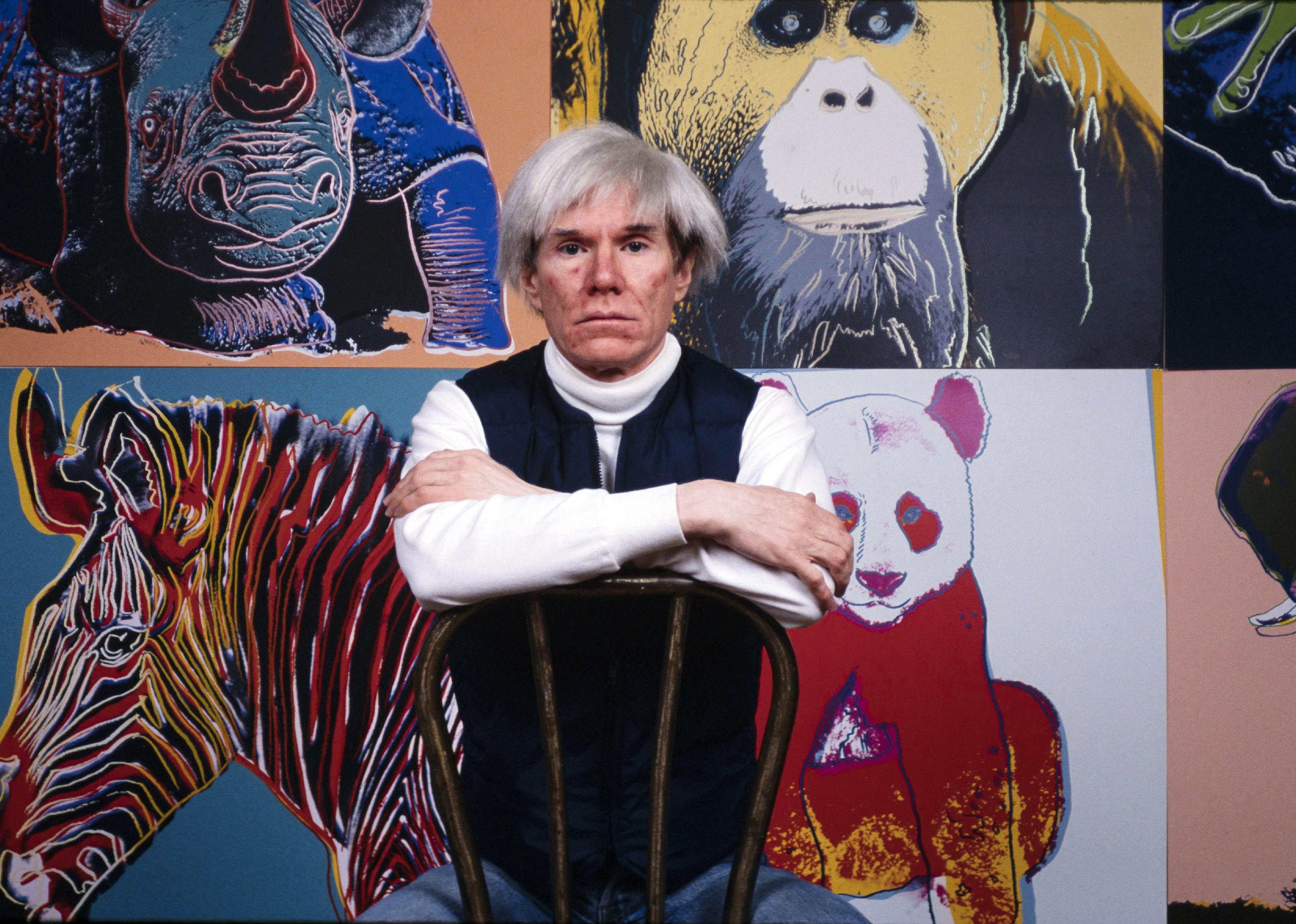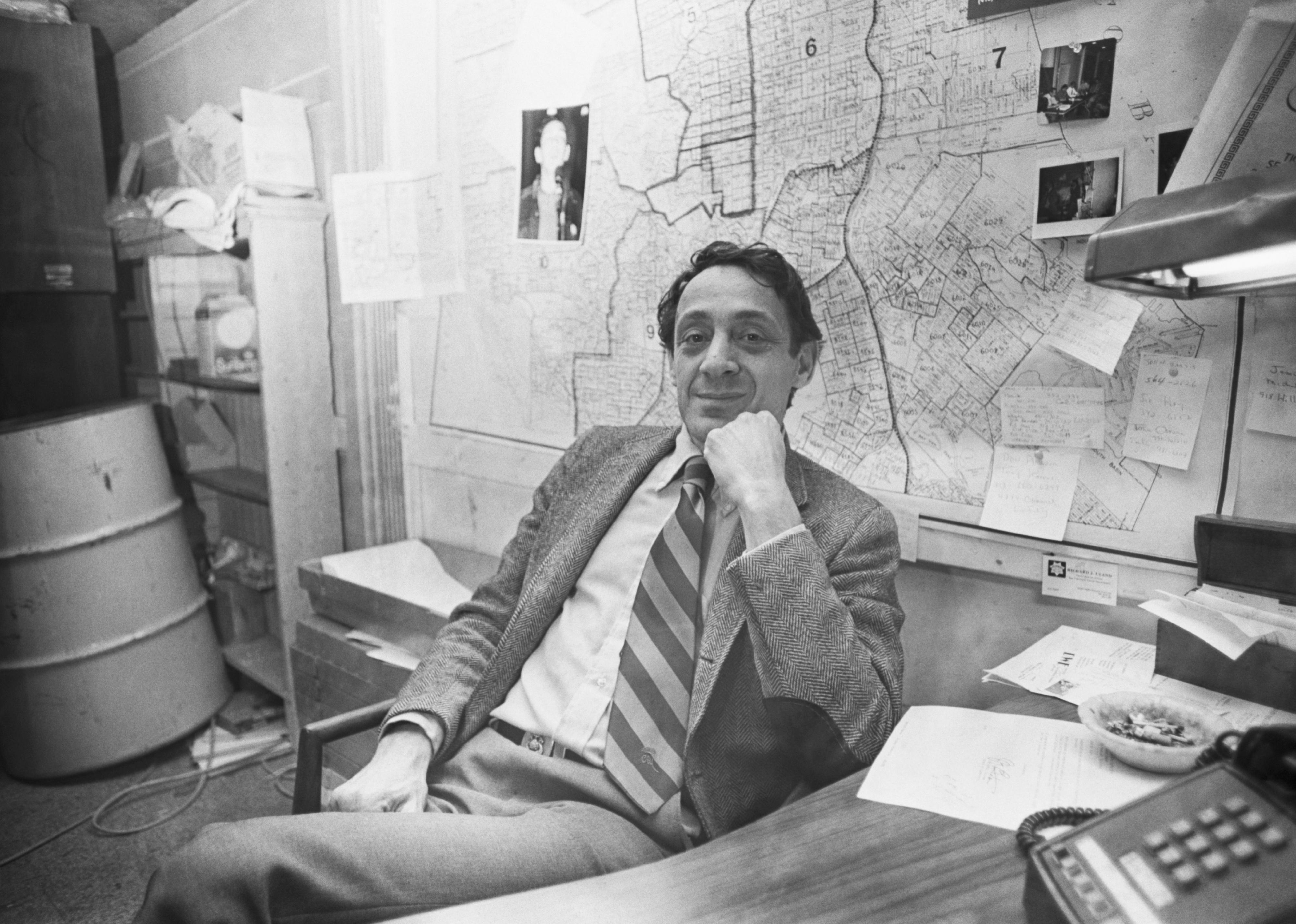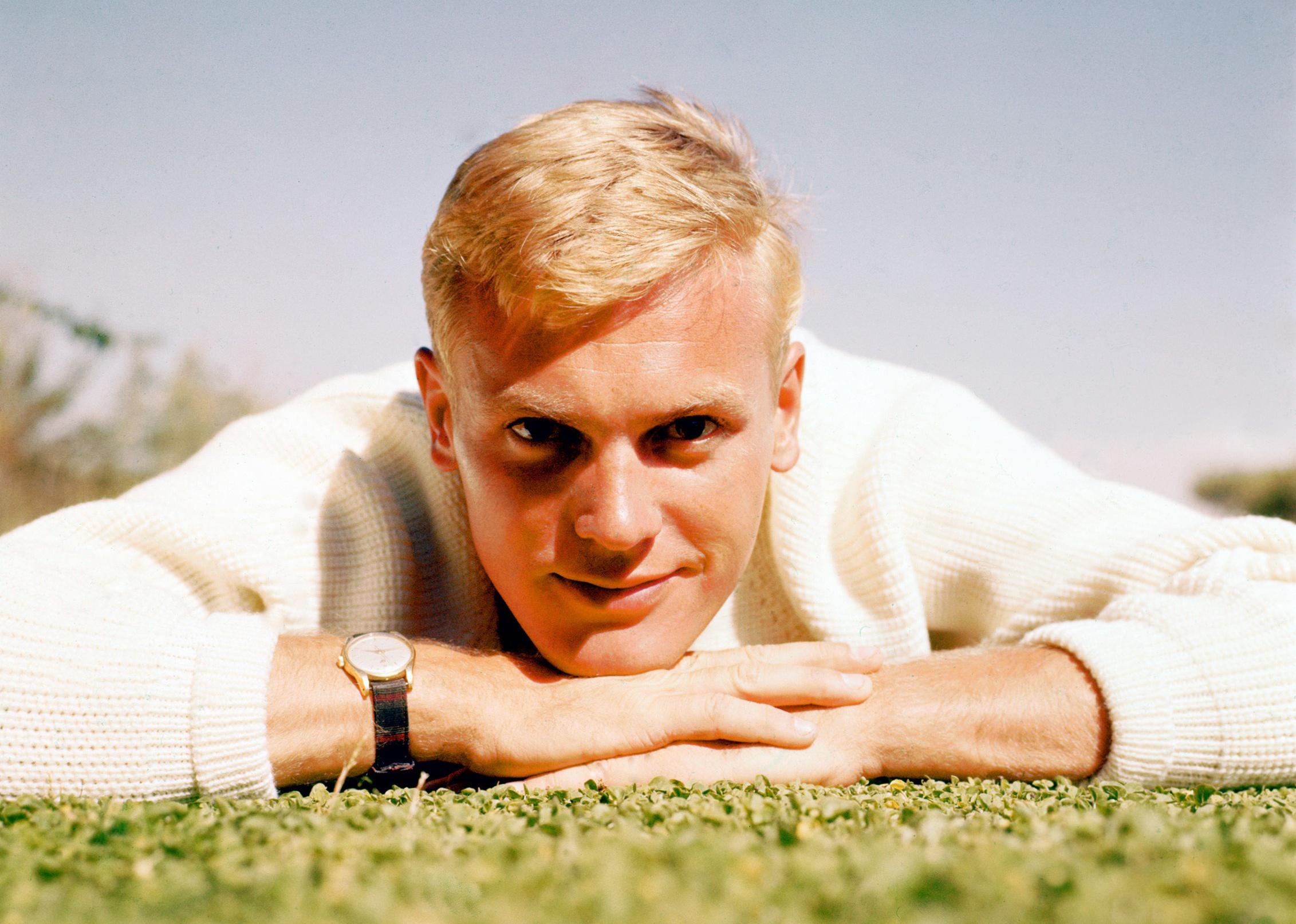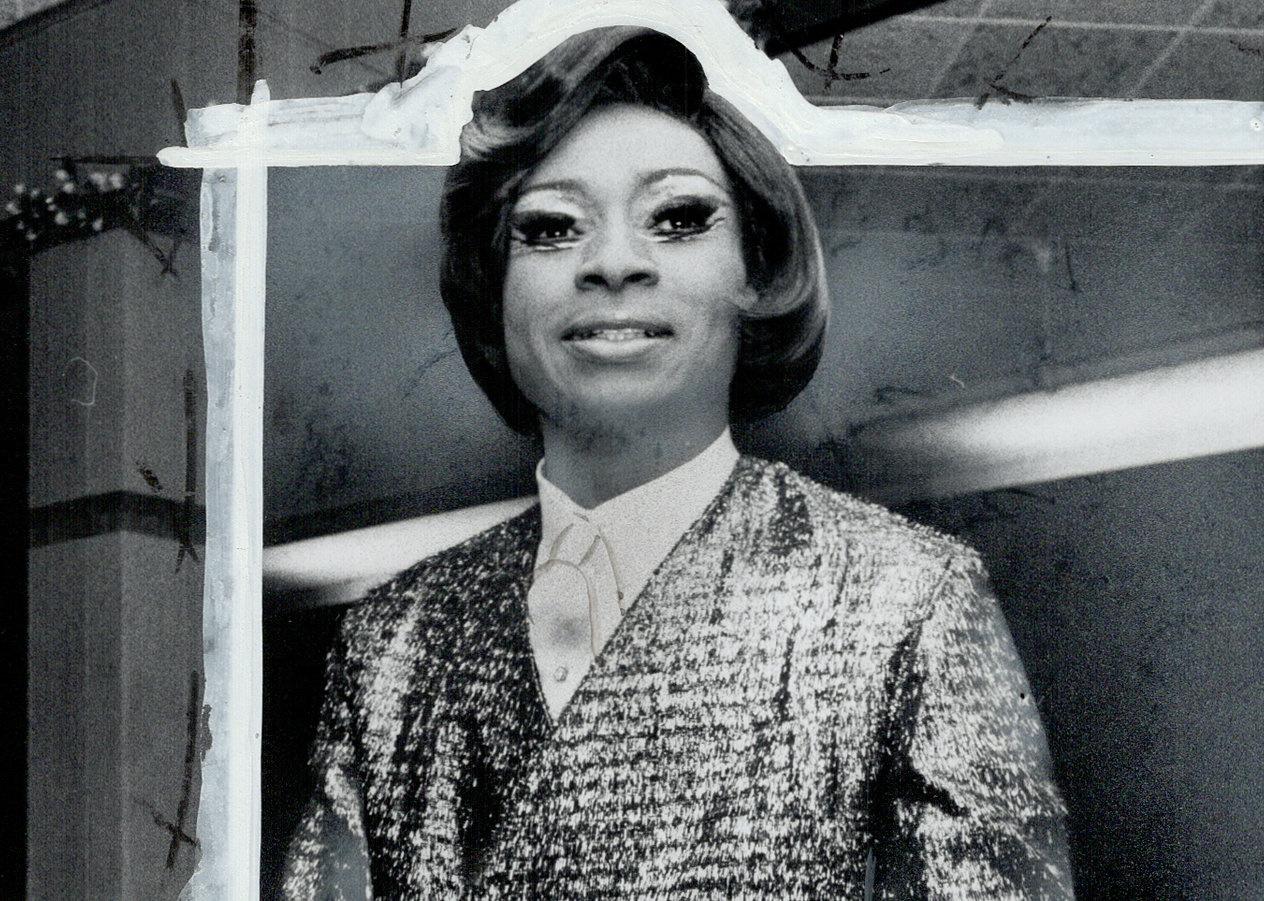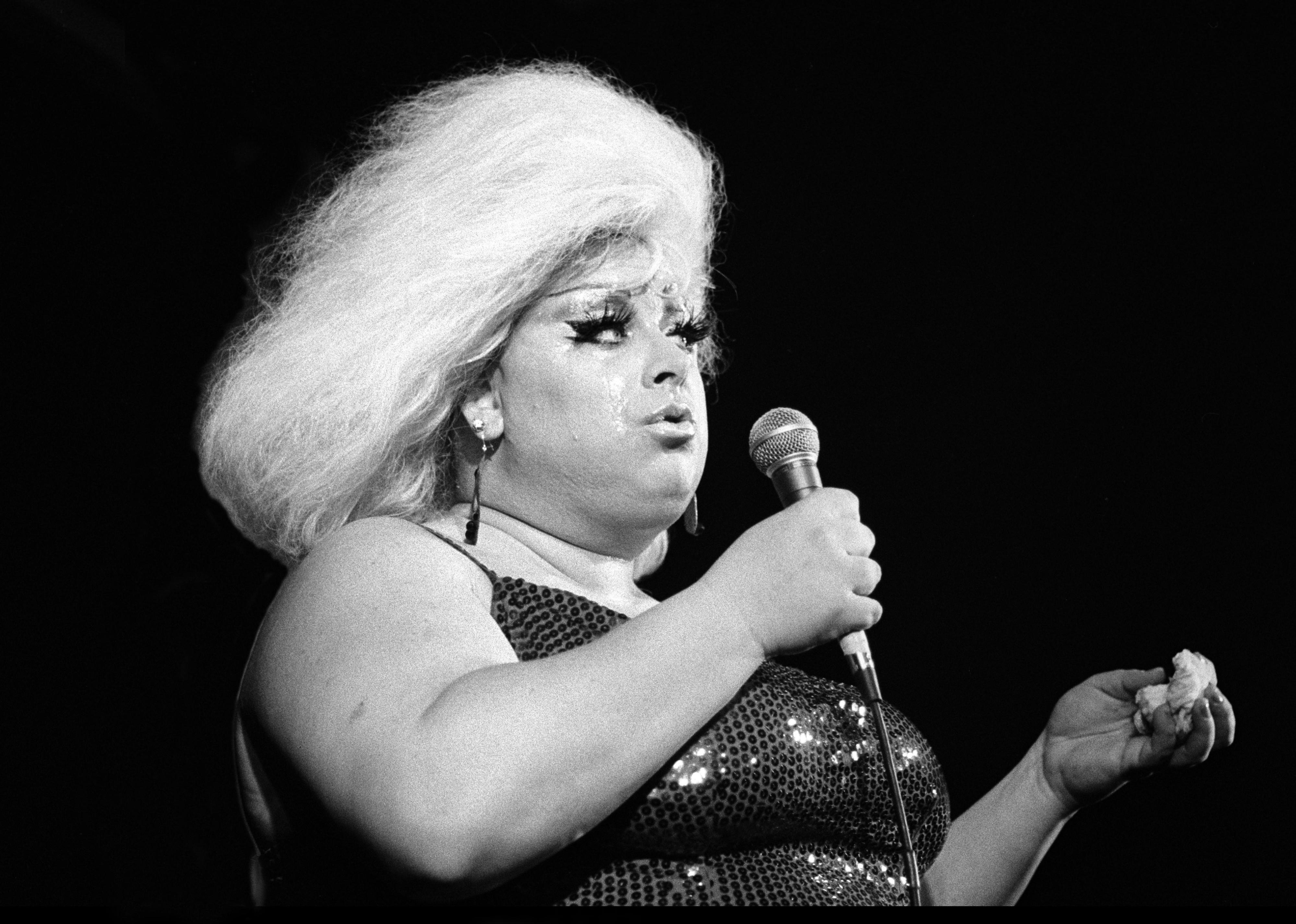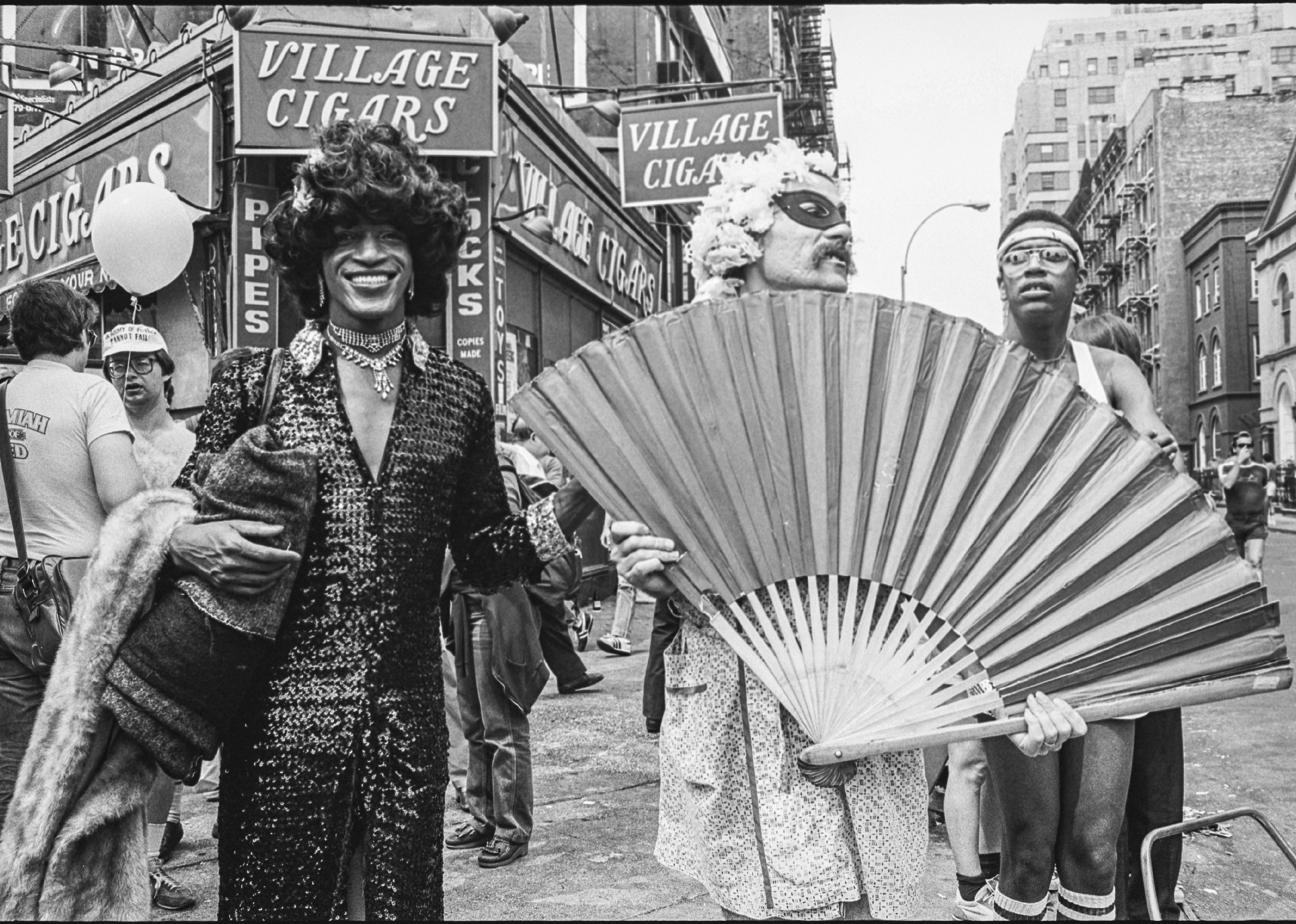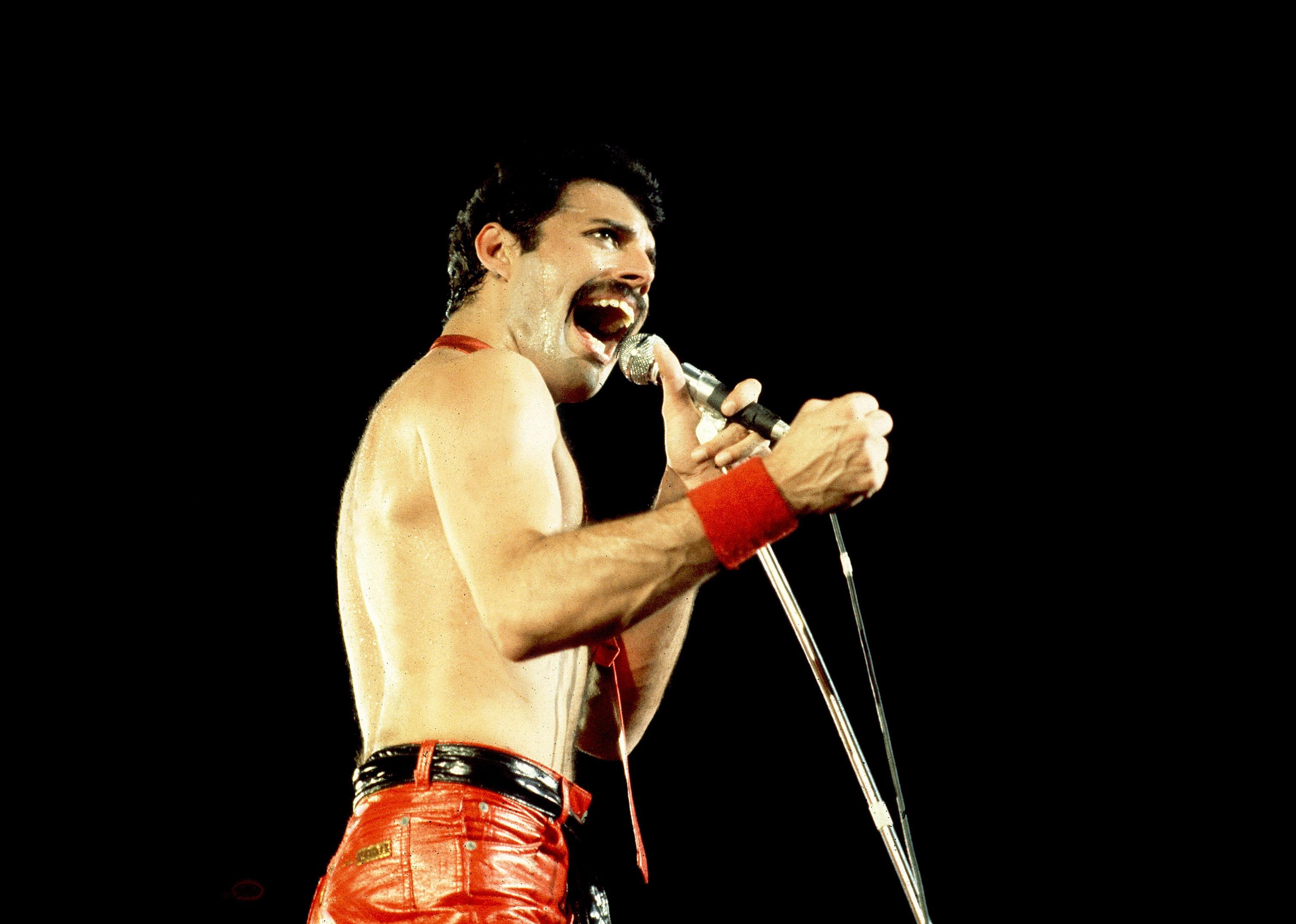25 LGBTQ+ people who changed the course of history
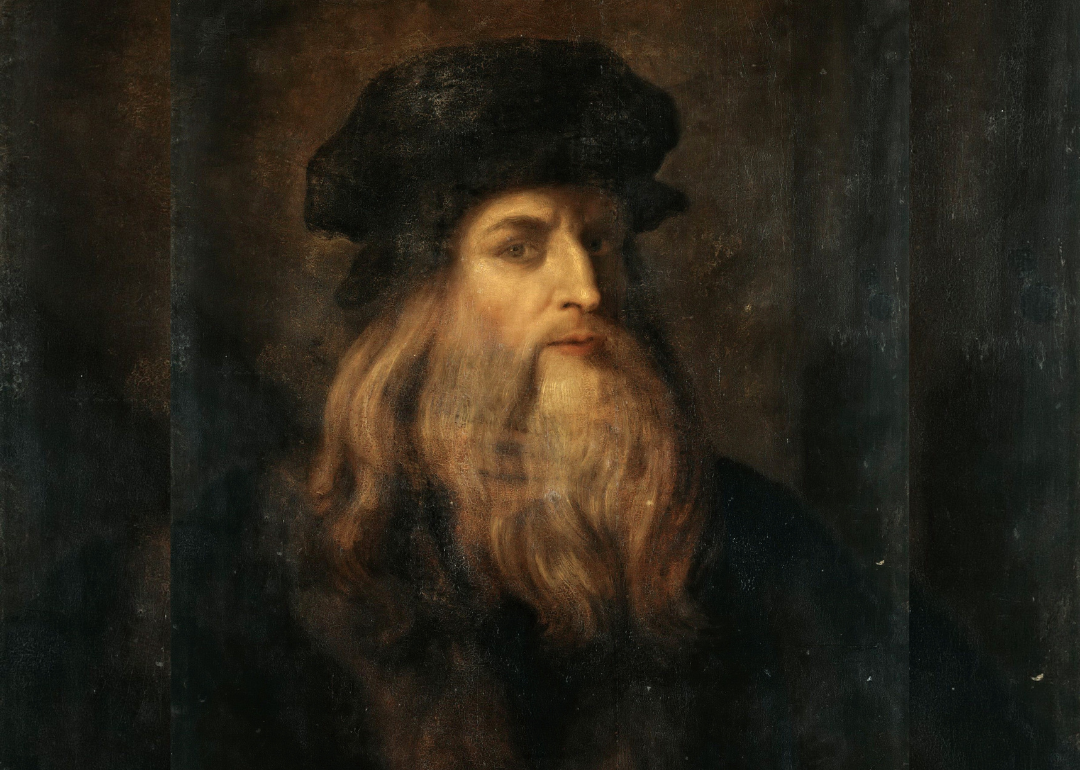
Fine Art Images/Heritage Images via Getty Images
25 LGBTQ+ people who changed the course of history
Oil painting of Leonardo da Vinci.
Though you might not have known it, some of the most significant figures throughout recorded history were members of the LGBTQ+ community. Some made monumental contributions to various fields—the sciences, visual arts, academia, literature, music, and politics, among others—and did so despite the social pressures and oppositions present during their respective lifetimes, all while overcoming discrimination, political prosecution, social taboos, or undisguised bigotry.
Whether or not some of these people were publicly recognized as gay, lesbian, bisexual, transgender, or “queer” in any sense of the word varies depending on the person and their history. Some of these historical trailblazers may have been open about their identity, paving the way for others in their respective communities to operate and innovate in their field. Others may not have been out, with knowledge of their identity and orientation only known to a few during their lifetime, or have not come to light until after their life. And in other cases, a person’s orientation and identity may still be under dispute between historians, descendants, and contemporaries.
In any case, Stacker compiled a list of just 25 of these LGBTQ+ historical figures, spanning a range of disciplines and periods, referencing articles, personal letters, and books. Each slide details a particular LGBTQ+ person from history, their accomplishments, and how their effects are still present today. For those figures whose orientation or identity remains unclear or under question, relevant sources and evidence are provided to explain their appearances on this list.
Read on to learn more about some of the most influential queer people in human history, and how they changed the world in one way or another.
![]()
Hulton Archive // Getty Images
Julius Caesar
Illustration of Julius Caesar as he lands his craft during his invasion on Britain.
-100 B.C.-44 B.C.
While ruling the Roman Empire as a dictator, Julius Caesar was often pelted with attacks by political enemies and rivals, often targeting rumored queer relationships of his. Accused of “sleeping his way” into a position of power, Caesar spent much time with King Nicomedes of Bithynia, and his rivals mocked him for apparently taking a “submissive role” in that relationship. Caesar would eventually meet his end when a number of senators conspired to assassinate him on the Ides of March in 44 B.C.
Bettmann // Getty Images
Alexander the Great
Alexander the Great fighting in the Battle of Issus.
-356 B.C.-323 B.C.
Named as such for his great military conquests, Alexander the Great created one of the largest ancient empires by the young age of 30—but little do people know there is discussion and debate about the sexuality of Alexander III of Macedon. What makes the subject unclear and hazy is the lack of any concept of sexuality during Alexander’s time, as same-gender relations were not taboo among higher-class Greeks. Some historical sources also cite Alexander’s relationship with Bagoas, a young Persian eunuch.
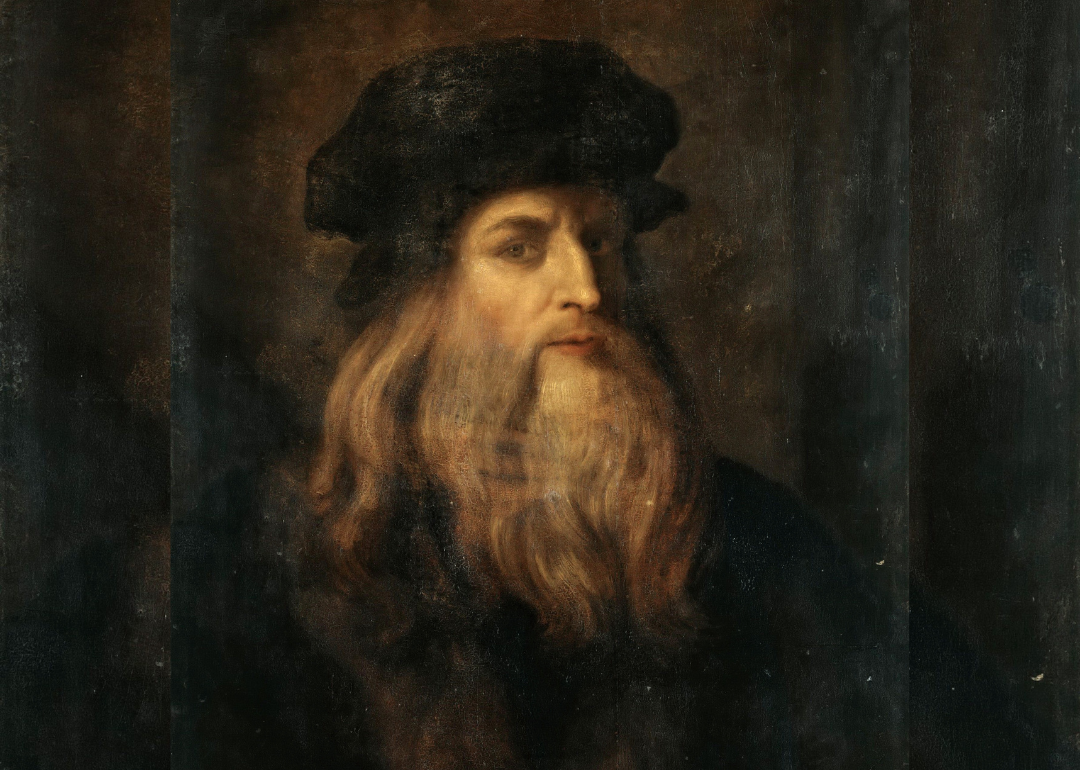
Fine Art Images/Heritage Images via Getty Images
Leonardo da Vinci
Oil painting of Leonardo da Vinci.
-1452-1519
Renaissance man Leonardo da Vinci was many things: an inventor, an artist, and an overall intellectual, with his best known artistic works being the paintings “Mona Lisa” and “The Last Supper.” One missed aspect of da Vinci’s life was his sexuality, with biographer Walter Isaacson citing da Vinci’s notebooks in recounting the artist’s relationships with younger men, including his students. Records also show da Vinci being arrested in 1476 with charges of sodomy.
Bettmann // Getty Images
Isaac Newton
Painting of Sir Isaac Newton.
-1643-1727
It goes without saying that Isaac Newton’s contributions to scientific knowledge have had a lasting impact on the world, as he is credited for developing the laws of motion and the theory of gravity that schools teach to students every day. In terms of Newton’s personal life, there has long been speculation about his romantic preferences, as he never married or publicly had any relationships. While some theorize Newton was a repressed gay man, others believe he was instead asexual.
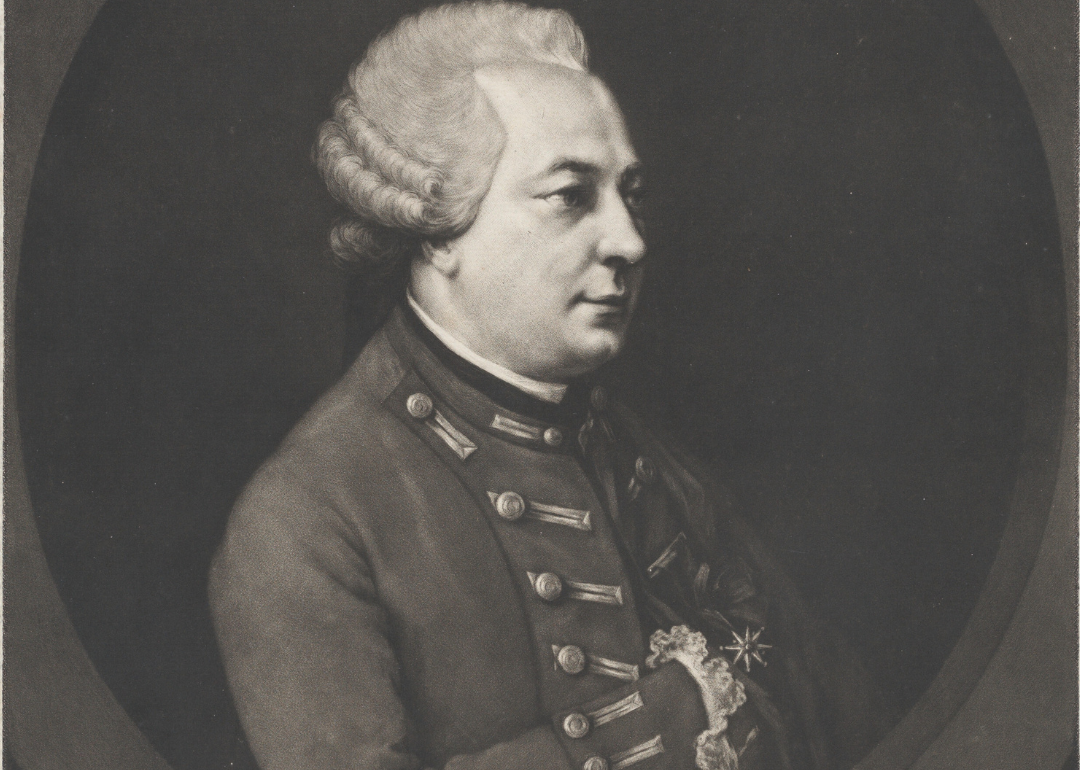
Heritage Art/Heritage Images via Getty Images
Chevalier d’Eon
Painting of Chevalier d’Eon.
-1728-1810
The Chevalier d’Éon was a French diplomat and soldier who fought in the Seven Years’ War, spying for France primarily from England. Known for their androgynous appearance, the Chevalier initially presented as a man in public but would, later on, live the rest of their life as a woman. During their time in London, a betting pool at the stock exchange speculated on their “true” sex. As such, the Chevalier is considered to be one of the first recorded transgender people in modern European history.
Heritage Art // Getty Images
Walt Whitman
Walt Whitman in Camden, N.J., circa 1891.
-1819-1892
The most well-known work of American poet Walt Whitman was “Leaves of Grass,” a poetry collection that remains influential and known to this day in literature. At the time of its publication, however, some critics targeted its content for its overt sexuality. While there is still debate and a lack of true clarity over Whitman’s sexual orientation, readers believe many of Whitman’s more salacious poems to be about men. And if fellow writer Oscar Wilde is to be believed, then Wilde and Whitman at some point had an intimate encounter sometime in 1882.
Historical // Getty Images
Oscar Wilde
A portrait of poet and novelist, Oscar Wilde.
-1854-1900
As one of the most prolific authors and playwrights of his time, Oscar Wilde wrote everlasting works such as the novel “The Picture of Dorian Gray” and the play “The Importance of Being Earnest.” Wilde was known for being flamboyant and witty, with many of his spoken and written quotes still used in the present day. At the peak of his fame, however, Wilde faced prosecution for “indecency” with men and was sentenced to hard labor for two years, dying in exile not long afterward. It wasn’t until 2017 that the British government posthumously pardoned Wilde under what was known as “Turing’s Law.”
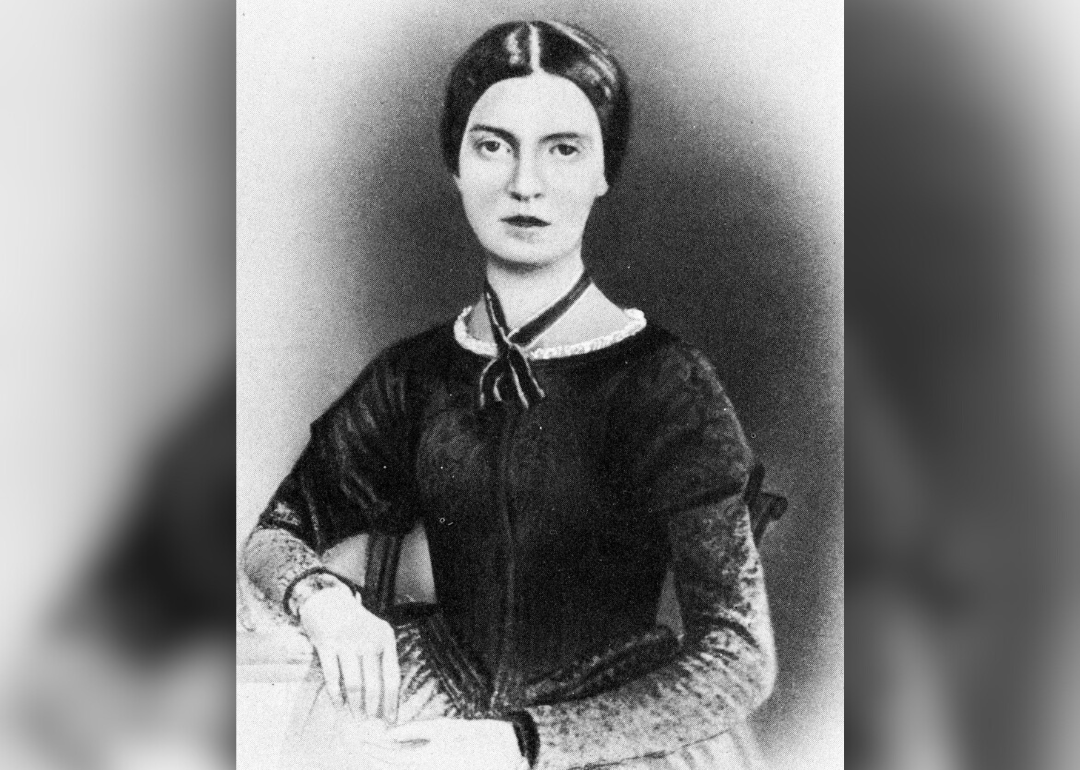
Culture Club // Getty Images
Emily Dickinson
Daguerreotype of Emily Dickinson, c. early 1847.
-1830-1886
Massachusetts native Emily Dickinson wrote poems that were unconventional, challenging restraints and conventions in structure and format. It wasn’t until after she died in 1886 when her sister found her collection of poems did Dickinson’s work gain fame and acclaim. Many of her poems were dedicated to her sister-in-law Susan Gilbert, and this in addition to their many letters exchanged to each other has led scholars and observers to believe that the two had a romantic relationship. Dickinson never married.
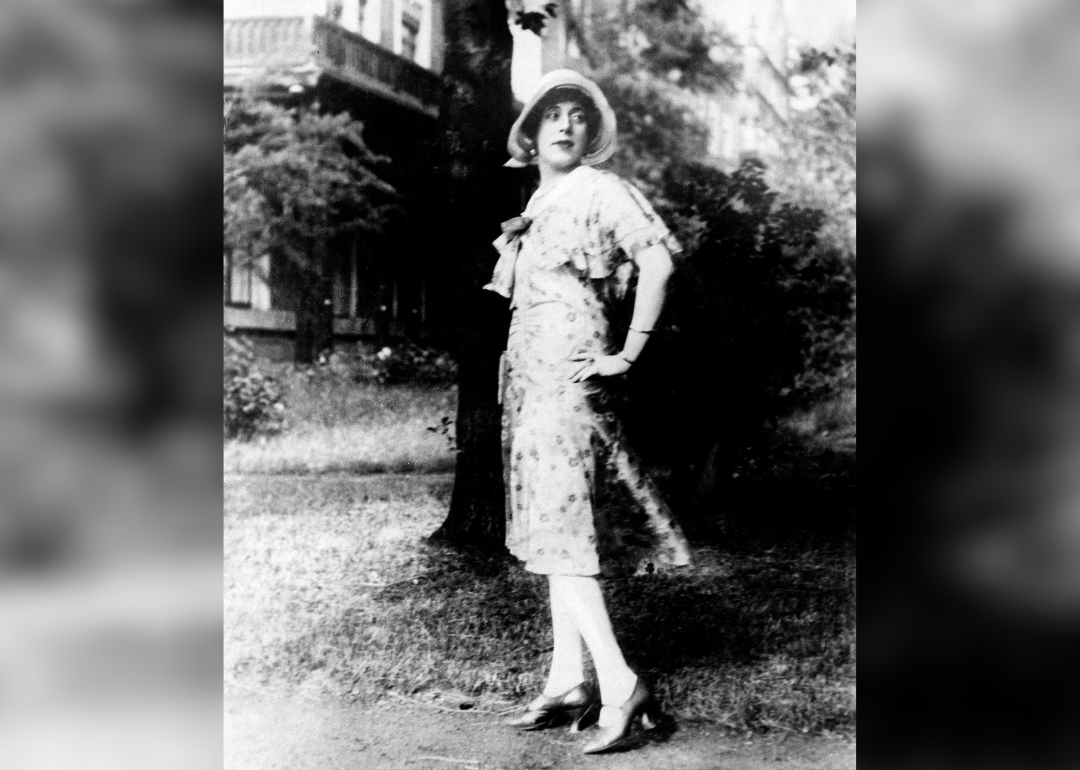
ullstein bild via Getty Images
Lili Elbe
Lili Elbe in Paris.
-1882-1931
Originally assigned male at birth, Lili Elbe was a painter who was one of the first people to undergo gender-affirming surgery. Elbe was married to fellow painter and artist Gerda Wegener, who frequently used Elbe as a subject and model of her art, and introduced Elbe to people at social engagements as a family member of her “husband.” Elbe received multiple surgeries through 1930 and 1931, eventually dying due to complications from one such operation.
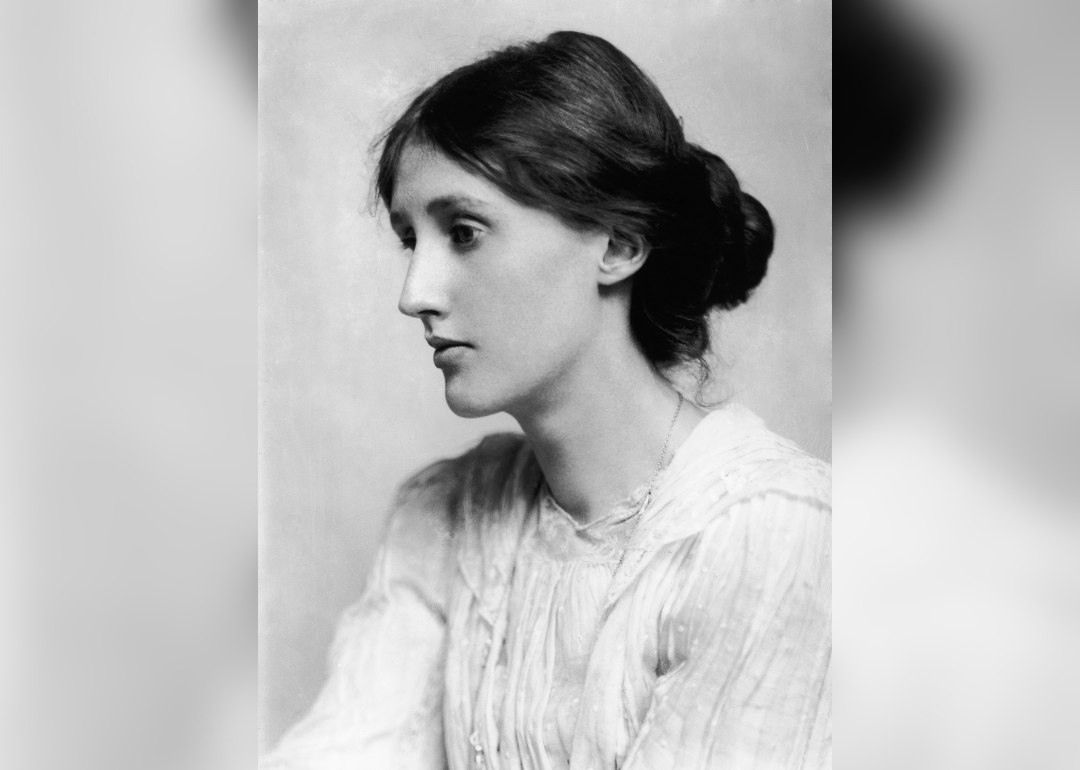
Fine Art Images/Heritage Images/Getty Images
Virginia Woolf
Portait of Virginia Woolf by artist George Charles Beresford.
-1882-1941
English writer Virginia Woolf is considered one of the progenitors of the modernist literary movement, with her stream-of-consciousness prose becoming extremely influential. But despite her marriage to a man, Woolf was noted for her close relationship with fellow author Vita Sackville-West, and the two sent intimate letters to each other over the course of several years. In fact, many believe that Sackville-West was Woolf’s inspiration for the protagonist of her novel “Orlando,” with Sackville-West’s son calling the book “the longest and most charming love letter in literature.”
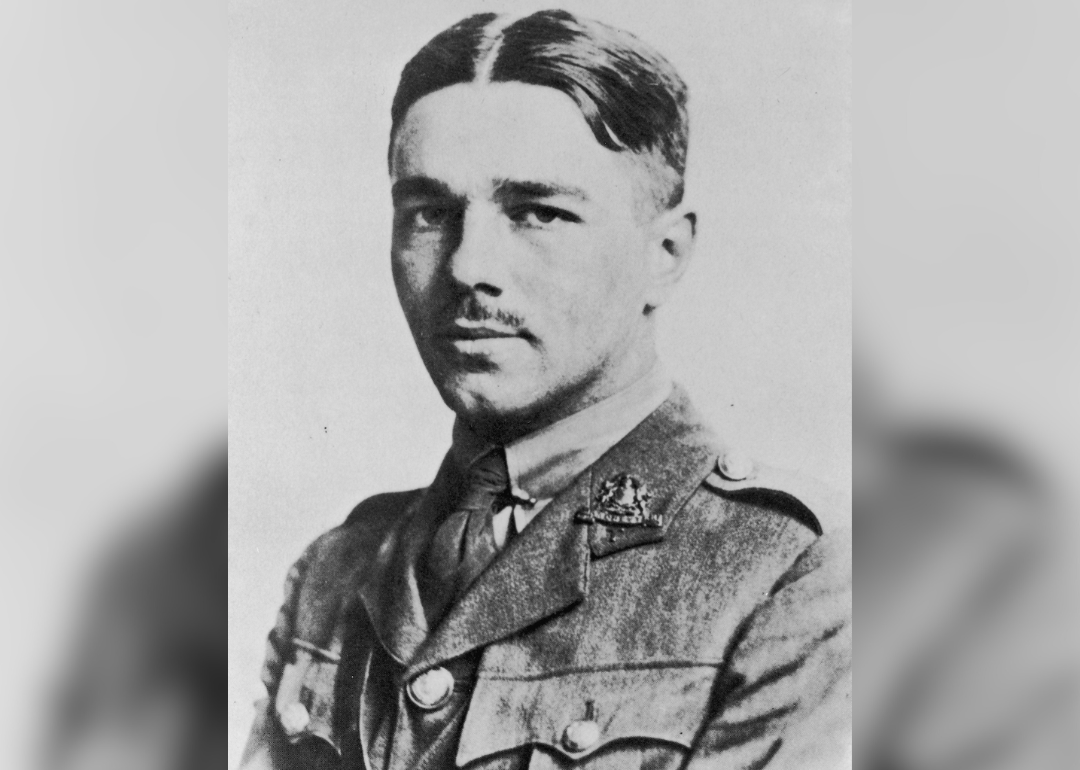
Fotosearch/Getty Images
Wilfred Owen
A photo of Wilfred Owen in 1916
-1893-1918
During the First World War, English soldier Wilfred Owen wrote numerous memorable poems, including “Dulce et Decorum Est,” which vividly described a poisonous gas attack during the war. Owen would eventually receive recognition for his poetic work, although this did not come to pass until after his untimely death in action shortly before the war ended. Owen was the protegee of fellow poet Siegfried Sassoon—the two engaged in an intimate relationship, with both expressing their strife over the war in the form of their poetry.
Hulton Archive // Getty Images
Josephine Baker
Josephine Baker applies makeup with a powder puff in her dressing room.
-1906-1975
The multi-talented Josephine Baker was a singer, dancer, activist, and even a spy during World War II. Born in the United States but later moved to France, Baker is noted for being the first Black woman to star in a major movie—”Siren of the Tropics” in 1927—and she refused to sing and perform in front of segregated audiences in the United States. Baker was also known for having “lady lovers” during a time when “bisexual” was not a used term.
Bettmann // Getty Images
Frida Kahlo
Artists Diego Rivera and Frida Kahlo.
-1907-1954
Mexican painter Frida Kahlo is revered not only in her country of origin but worldwide for her uncompromising art style and many self-portraits, her fame continuing long after her death. Kahlo was married to fellow painter Diego Rivera, although the two would engage in numerous affairs. Kahlo shared a brief affair with Leon Trotsky and accounts of rumored affairs with other famous women, including Georgia O’Keefe and Chavela Vargas. Rivera was also said to have encouraged Kahlo’s affairs with women.
Pictures from History // Getty Images
Alan Turing
Portrait of Alan Turing.
-1912-1954
Heralded as the “father” of modern computer science and a key player in World War II, British mathematician Alan Turing’s work as a cryptanalyst for the Allies led him to crack the Nazi Enigma code, contributing to the Allies’ victory. Despite his service, however, Turing was prosecuted by his government for being in a homosexual relationship. Turing would die of a suspected as a suicide from cyanide poisoning at age 41. Only during the 21st century would leaders in the British government apologize for its mistreatment of Turing, posthumously granting him a royal pardon.
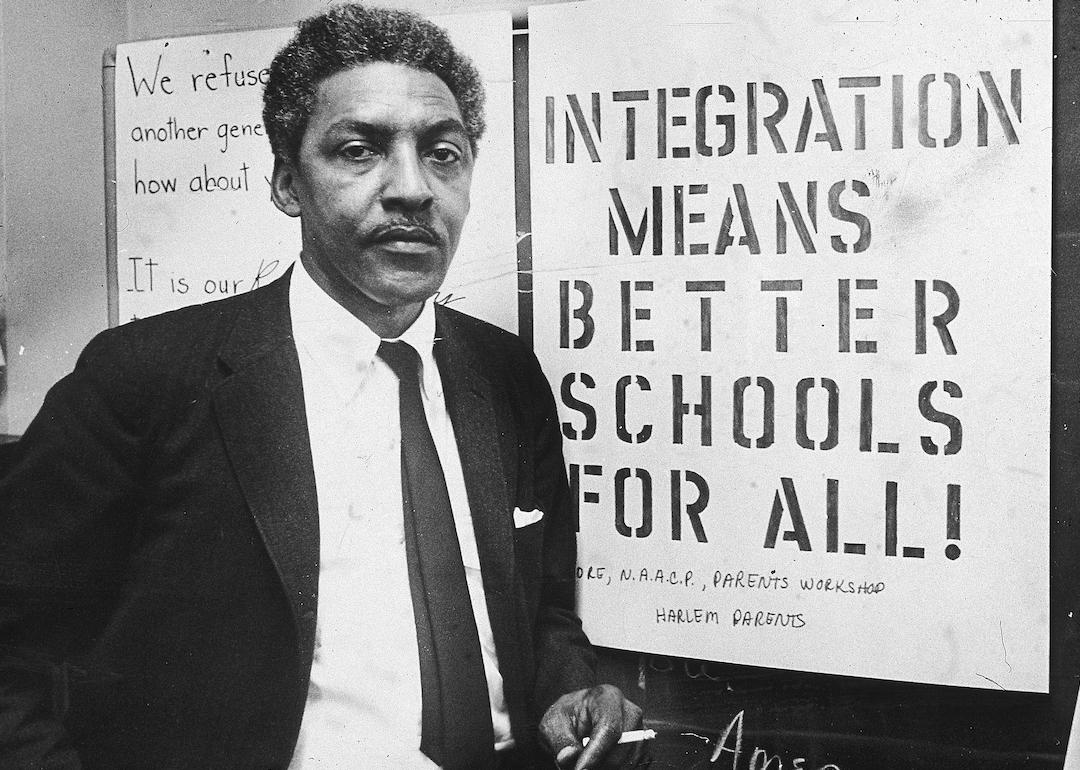
Patrick A. Burns/New York Times Co. // Getty Images
Bayard Rustin
American civil rights activist Bayard Rustin at the organization’s headquarters at Silcam Presbyterian Church.
-1912-1987
Bayard Rustin bravely walked the dangerous world of social and political movements in the ’40s as an openly gay Black man fighting for both Black and LGBTQ+ rights during a time when it was practically illegal to be either in America. A close advisor to Dr. Martin Luther King Jr. and one of the key organizers of the March on Washington, Rustin was one of the major proponents of the nonviolent actions of Civil Rights protests. He was an organizer, strategist, and a blaze-carrying torchbearer in the fight for civil rights for all.
Michael Ochs Archives // Getty Images
Billie Holiday
Billie Holiday records her penultimate album ‘Lady in Satin at the Columbia Records studio.
-1915-1959
Also known as “Lady Day,” Billie Holiday was an influential jazz singer most famous for her vocal range and improvisational ability. Holiday married three different men in the course of her life, and she faced numerous hardships, including drug addiction and a brief stint in prison. During her time in prison, Holiday was said to have engaged in relationships with other women, and she is also said to have dated actress Tallulah Bankhead.
Sophie Bassouls // Getty Images
James Baldwin
American Writer James Baldwin in Paris.
-1924-1987
The sexuality of Black American author James Baldwin was described as “complex,” according to some academics. Baldwin’s written works addressed sexuality, race, and class, bringing light to issues that both Black Americans and gay Americans faced during his lifetime. As a result, Baldwin and his work are described as intersectional, providing a perspective informed by both racism and homophobia that gay Black Americans would experience.
Ulf Andersen // Getty Images
Gore Vidal
American writer Gore Vidal poses during portrait session.
-1925-2012
The works of American author and intellectual Gore Vidal challenged many social norms of his time—for example, his novel “The City and the Pillar” featured a relationship between two men, while another novel titled “Myra Breckinridge” mentioned a gender-affirming operation. Openly bisexual, Vidal famously proclaimed that “we are all bisexual to begin with.” Despite this, Vidal didn’t necessarily believe in “gay” as a label.
Brownie Harris/Corbis // Getty Images
Andy Warhol
Andy Warhol sits in front of several paintings in his ‘Endangered Species’ at his studio.
-1928-1987
From experimental films to paintings of Campbell’s soup cans, Andy Warhol was a leader in what was known as the “pop art” movement. Originally from Pittsburgh, Warhol moved to New York City to pursue commercial illustration, eventually using celebrities and other pop cultural images as subjects for his visual art. Warhol lived his life as a gay man, sometimes relaying his sexuality through drawings of nude men; much of his work can be found in museums around the world today.
Bettmann // Getty Images
Harvey Milk
Harvey Milk at a desk.
-1930-1978
Nicknamed the “Mayor of Castro Street,” Harvey Milk was an openly gay politician in San Francisco noted for his energy and charisma. While he initially lost an election for the San Francisco Board of Supervisors, Milk would continue to serve his local gay community through other means, founding the San Francisco Gay Democratic Club and eventually winning a seat on the Board of Supervisors. Milk served for nearly a year, but he and Mayor George Moscone were assassinated in November 1978 by former city supervisor Dan White.
Hulton Archive // Getty Images
Tab Hunter
American actor Tab Hunter, circa 1960.
-1931-2018
While Hollywood heartthrob Tab Hunter had a career beginning back in the 1950s, it wasn’t until 2005 when the “Damn Yankees” star publicly came out as gay. Long before then, any talk of Hunter’s sexuality was simply rumor or hearsay, but he had maintained a secret romance with “Psycho” star Anthony Perkins. After coming out, Hunter married producer and long-time partner Allan Glaser until Hunter’s death at age 86.
Jeff Goode/Toronto Star // Getty Images
Jackie Shane
Portrait Of Jackie Shane Between Sets.
-1940-2019
Originally assigned male at birth, singer Jackie Shane performed in women’s clothing and long hair at a young age, eventually leaving the southern United States for Canada. Shane found success in Canada, with her single “Any Other Way” hitting the local charts while breaking social and political lines. While Shane quietly retired and remained silent for several decades, many would revisit her work during the 21st century, and she is regarded as a trailblazer in transgender representation.
David Corio // Getty Images
Divine
Divine (Harris Milstead) perfoming at Heaven nightclub, London.
-1945-1988
Known as the “Drag Queen of the Century,” Harris Glenn Milstead is better known as Divine, a performer most prolific in the 1970s and 1980s. Divine’s most famous work included collaborations with counterculture filmmaker John Waters. His films include “Mondo Trasho,” “Pink Flamingos,” and “Hairspray,” where Divine originated the role of Edna Turnblad. The drag performer would influence practically every drag performer to come after, leaving a legacy that included a bombastic stage personality and cult classic movies.
Barbara Alper // Getty Images
Marsha P. Johnson
Marsha P. Johnson At 1982 Pride March.
-1945-1992
Quite possibly the most prominent player in the gay liberation movement of the 1960s and 1970s was Marsha P. Johnson, an activist and self-identified drag queen. As a transgender woman, Johnson faced abuse from police and had no permanent home while working as a drag queen and waitress, but she would find herself in the frontlines of gay rights protests after police raided the Stonewall Inn in 1969. Johnson then became a co-founder of the Gay Liberation Front and Street Transvestite Action Revolutionaries, working to provide shelter and safety to trans youth via STAR House and becoming a prolific performer—unfortunately, Johnson was found dead in the Hudson River in 1992, and while police ruled her death a suicide, friends and many observers suspect foul play led to the revolutionary figure’s untimely passing.
Paul Natkin // Getty Images
Freddie Mercury
Freddie Mercury of Queen on 9/19/80 in Chicago, Il.
-1946-1991
Freddie Mercury was the face of the legendary British rock band Queen. Mercury’s vocal range and lyrical abilities led to classic songs including “We Are the Champions,” “Don’t Stop Me Now,” and “Bohemian Rhapsody.” While Mercury never publicly gave a label to his sexuality, he was a known bisexual man, having had relationships with both women and men; Mercury would later die at the age of 45 due to complications from AIDS.
Data reporting by Dom DiFurio. Story editing by Cynthia Rebolledo. Copy editing by Paris Close. Photo selection by Clarese Moller.
